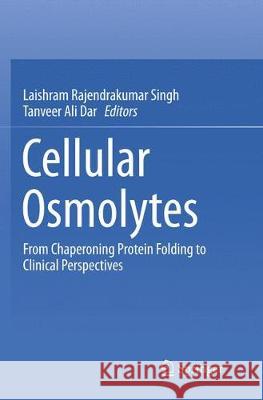Cellular Osmolytes: From Chaperoning Protein Folding to Clinical Perspectives » książka
topmenu
Cellular Osmolytes: From Chaperoning Protein Folding to Clinical Perspectives
ISBN-13: 9789811099472 / Angielski / Miękka / 2018 / 249 str.
Kategorie BISAC:
Wydawca:
Springer
Język:
Angielski
ISBN-13:
9789811099472
Rok wydania:
2018
Wydanie:
Softcover Repri
Ilość stron:
249
Waga:
0.51 kg
Wymiary:
23.39 x 15.6 x 1.73
Oprawa:
Miękka
Wolumenów:
01











